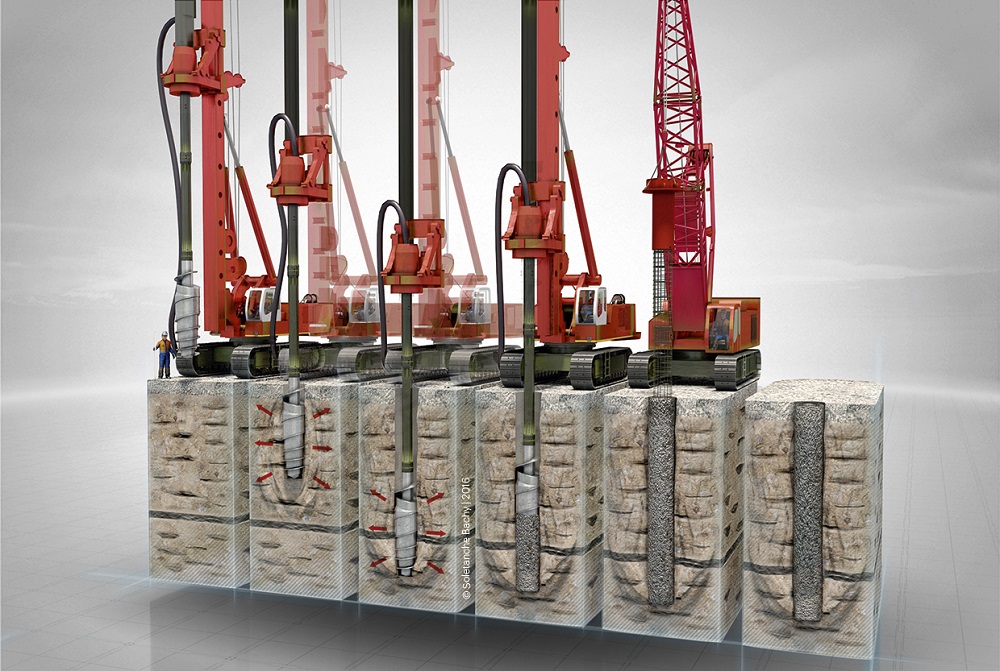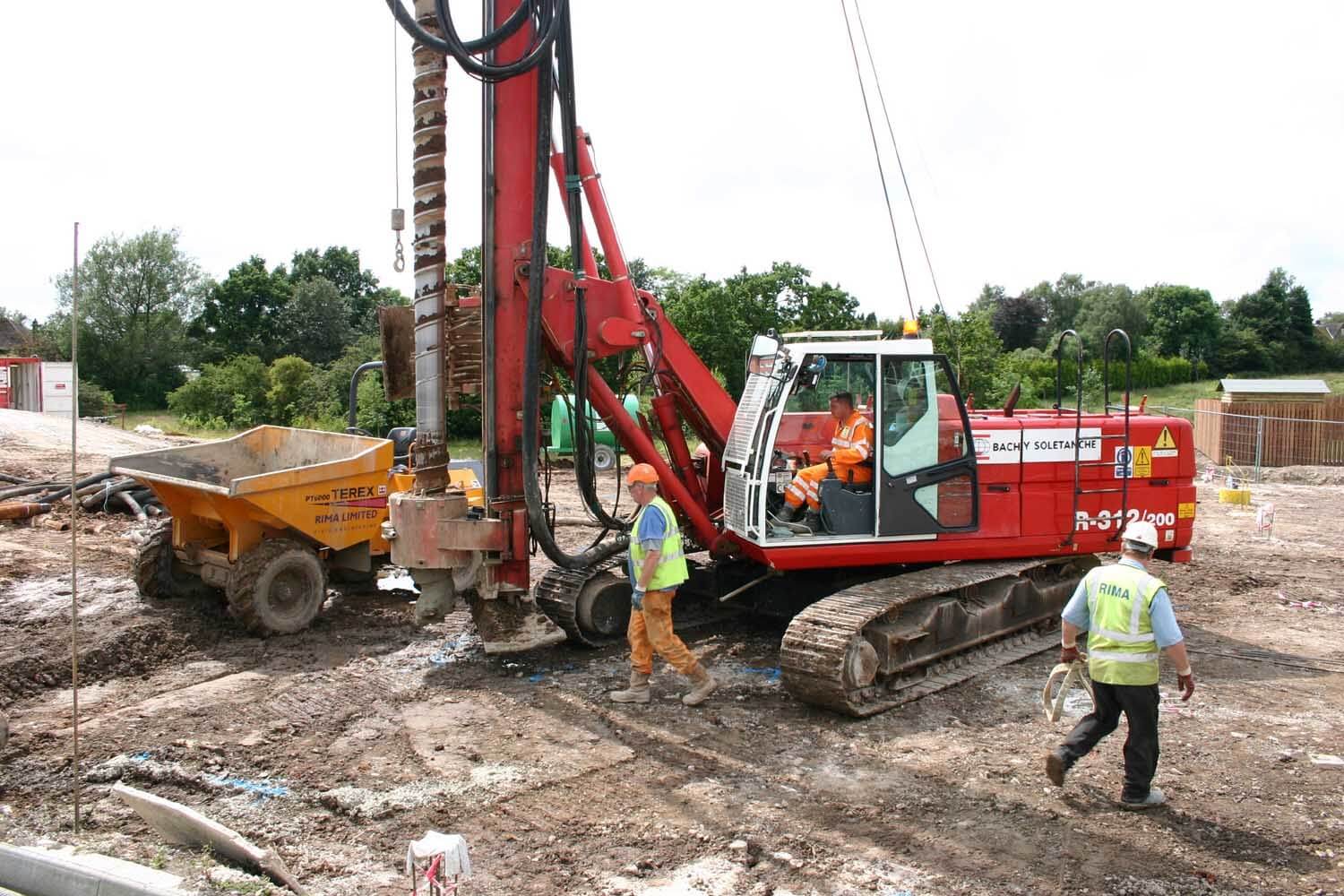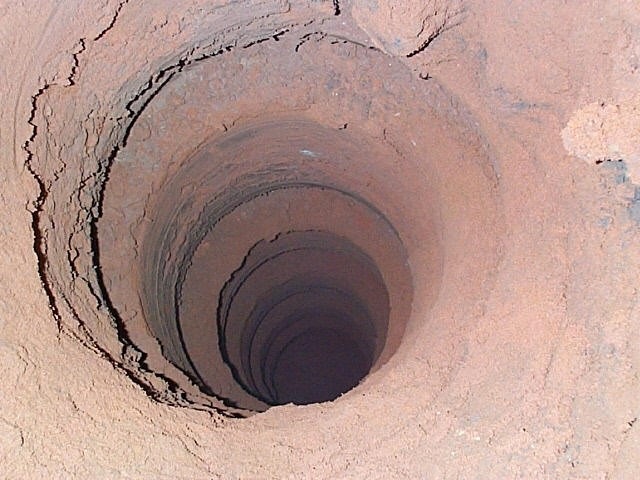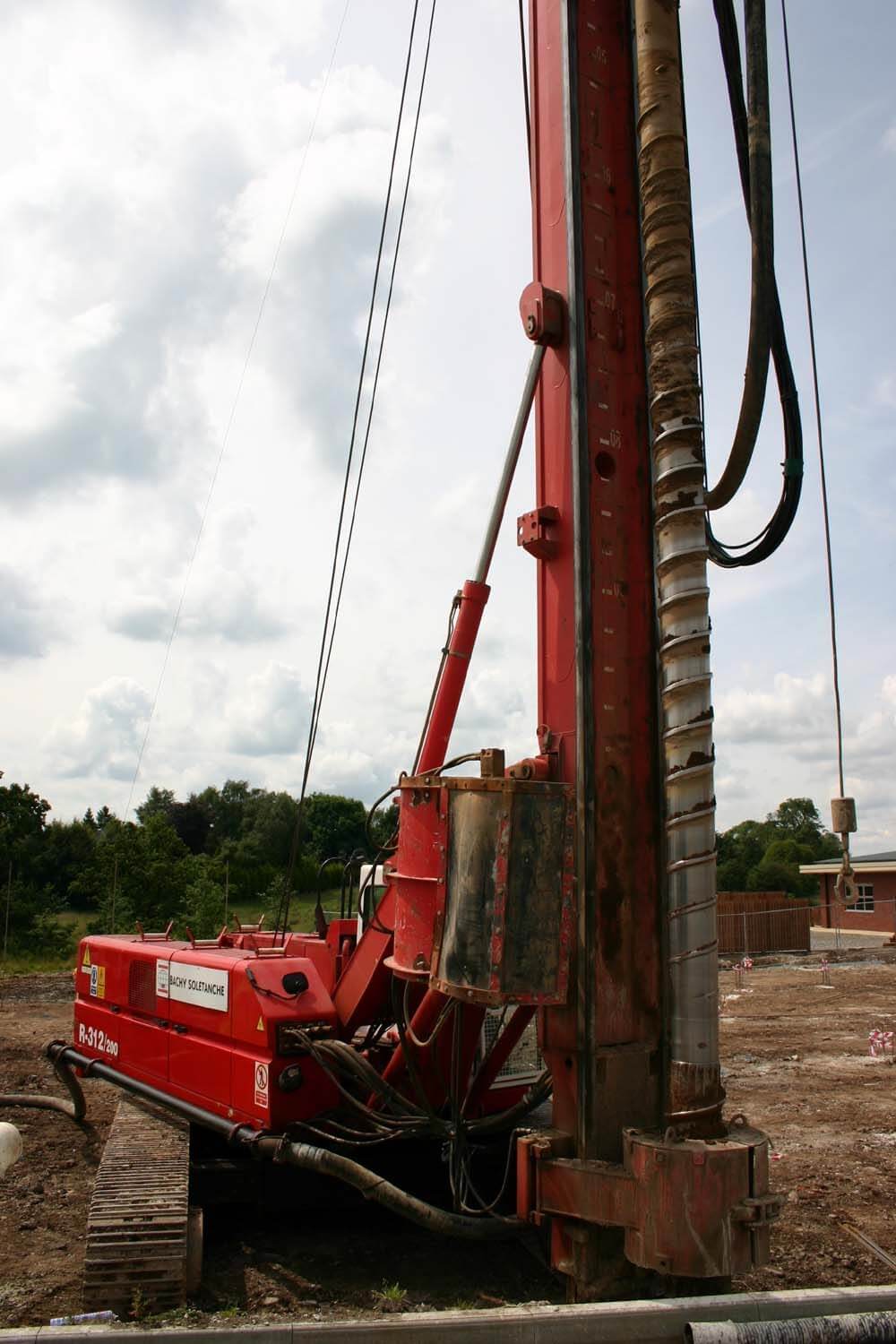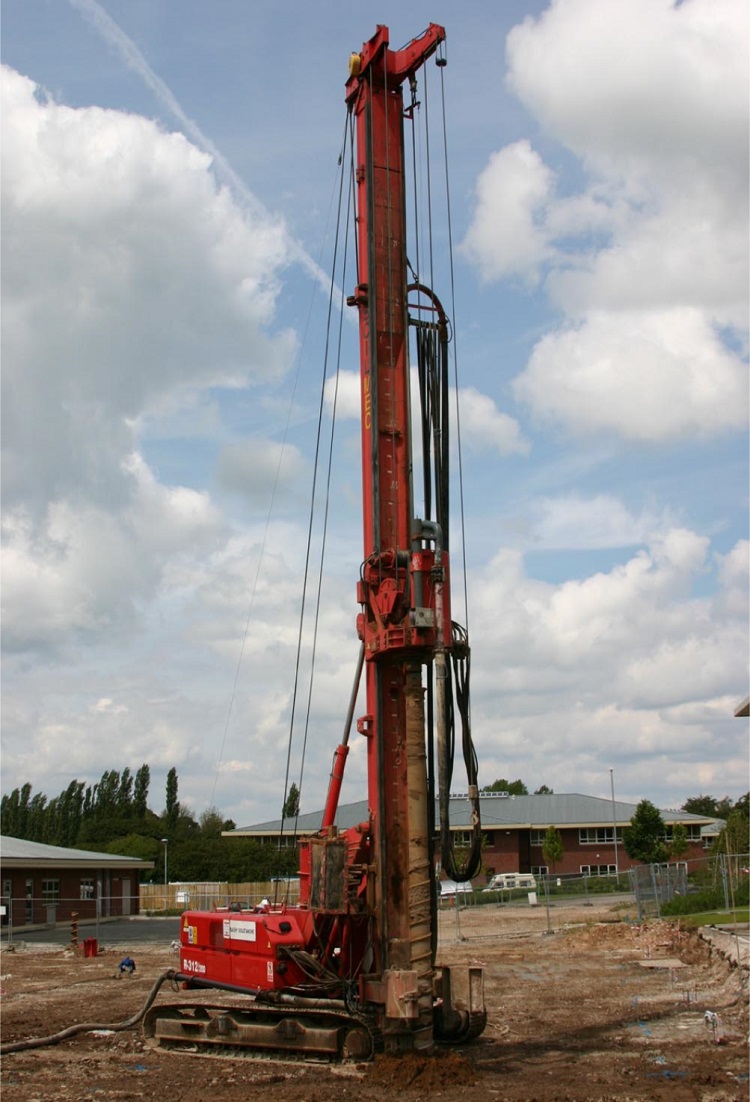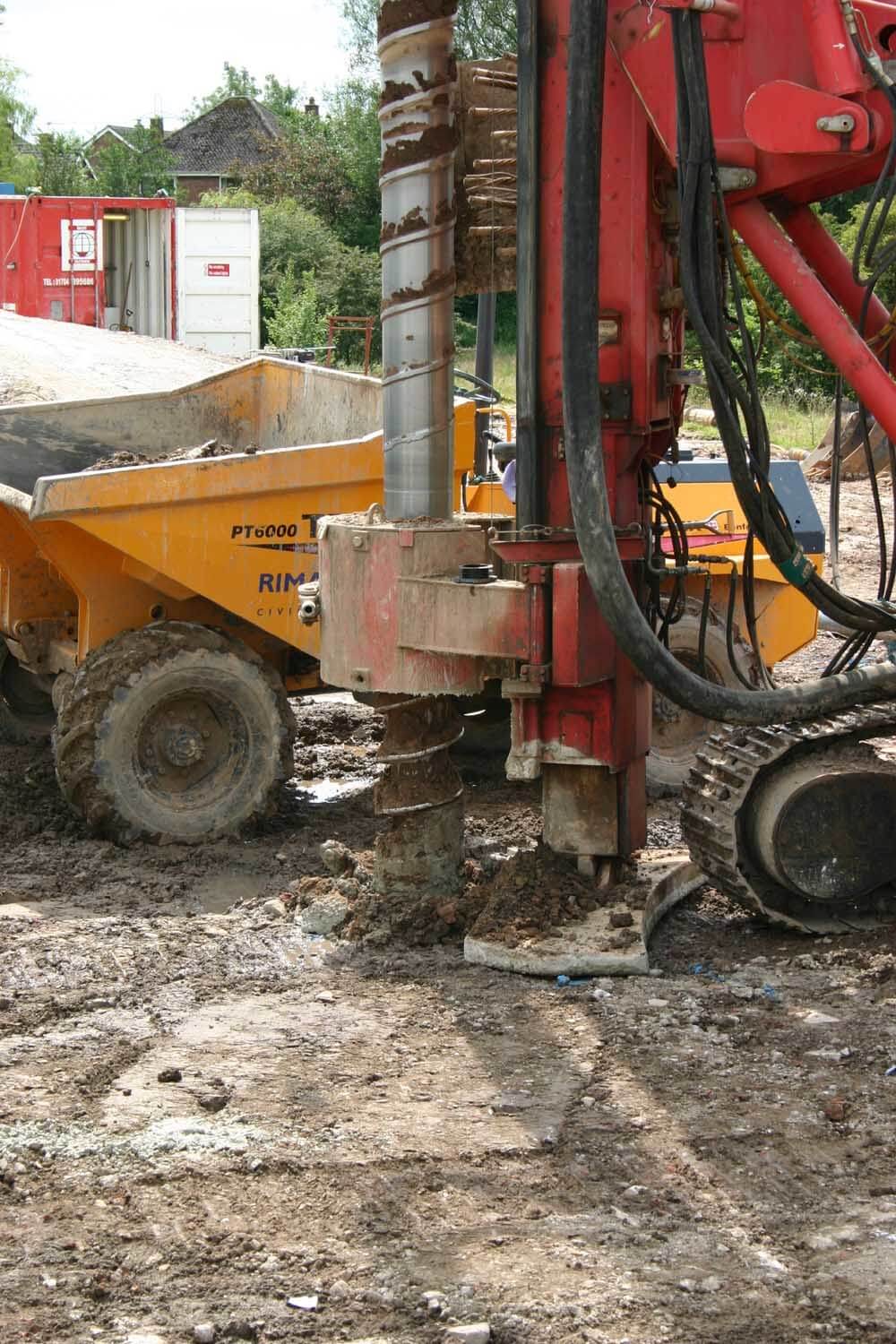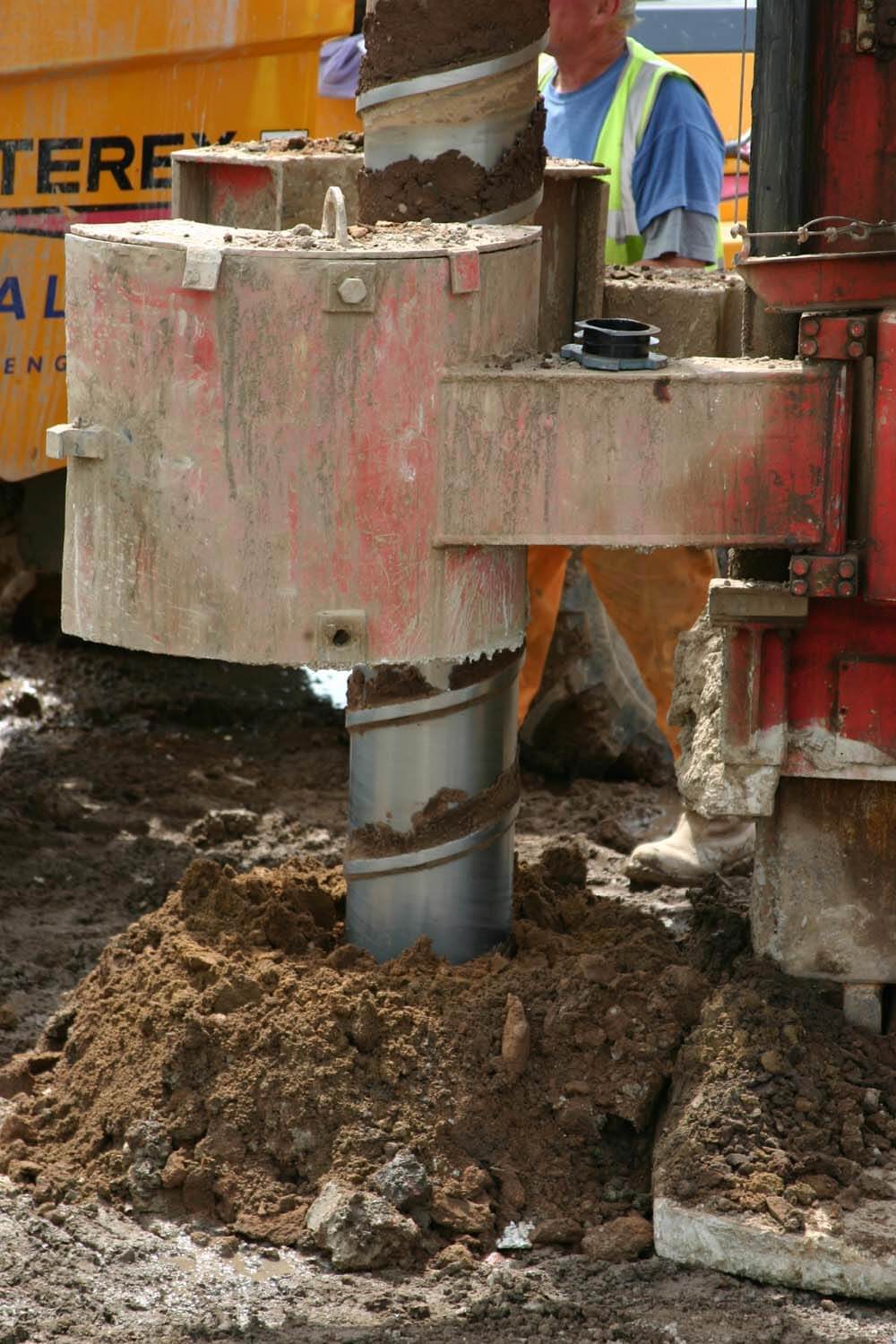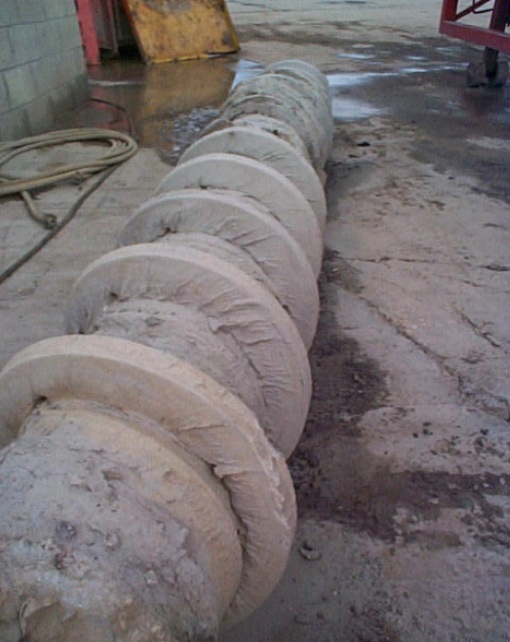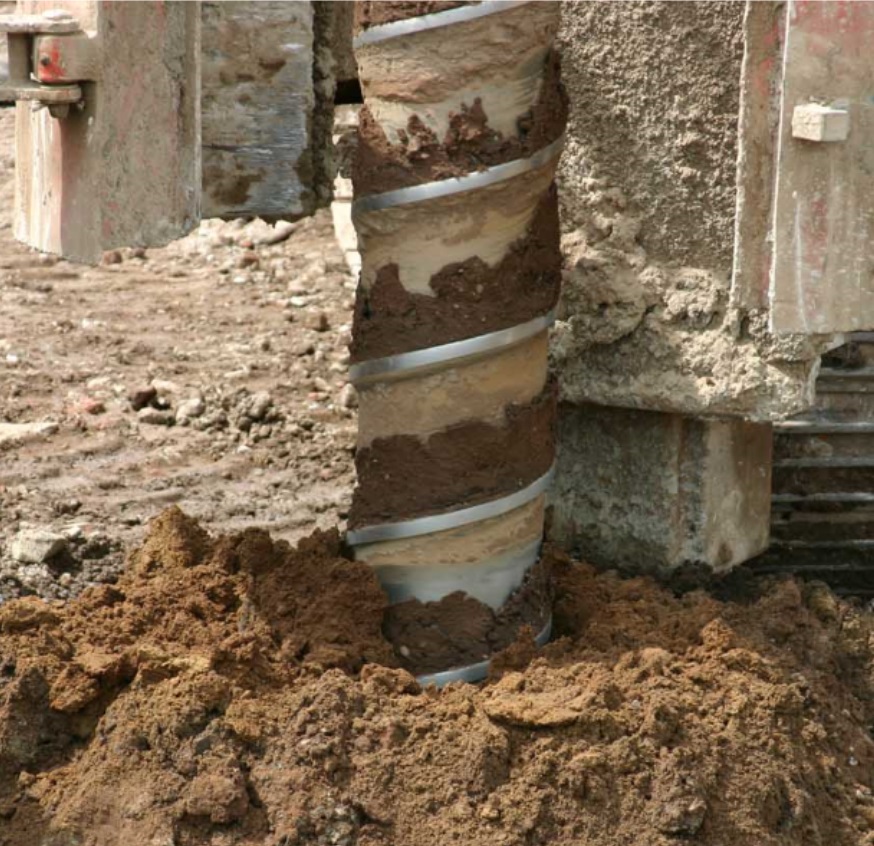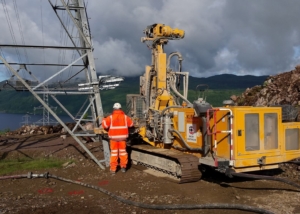Rotary Displacement Piling systems provide improved soil strength, pile capacity and load transfer to the surrounding ground by displacing the soil during the drilling process. They can also reduce the cost of foundations by reducing pile lengths and diameters and, most significantly, substantially reducing/eliminating the cost of pile spoil disposal.
HOW IT WORKS:
By use of a tapered boring tool which penetrates the ground it displaces the soil thereby increased relative density and strength (depending upon soil conditions). Minimal spoil comes to the surface which is not flighted up to the surface.
Load transfer can be further improved to the surrounding ground using a threading mechanism incorporated into the tool, which forms a thread. Concrete threads are created when the tool is extracted that increase the diameter/surface area of the bore and therefore its load bearing capacity, which facilitates the load transfer from pile core to soil.
There are several types of tools which have been developed for particular ground conditions:
- SCREWSOL tools are ideal for sandy ground conditions due to the threaded displacement auger.
- SOLTHREAD tools have a threaded rotary flight, not displacement and are ideal for clay ground conditions.
- THREADED CFA tools are also available for specific ground conditions.
Capability: Depending upon ground conditions, we are able to construct Rotary Displacement piles to a diameter of 600 mm and to a depth of 20m, using a 350/500mm core and a 75mm thread.
Advantages: As there is minimal spoil at ground level, Rotary Displacement Piling provides an ideal solution for brownfield sites where ground conditions may be poor and contamination may be an issue.
